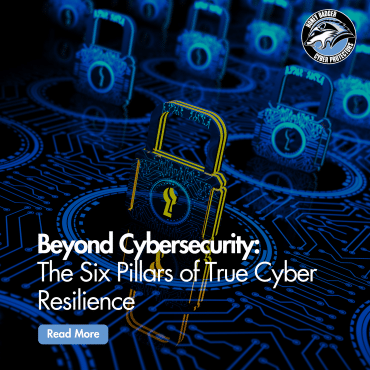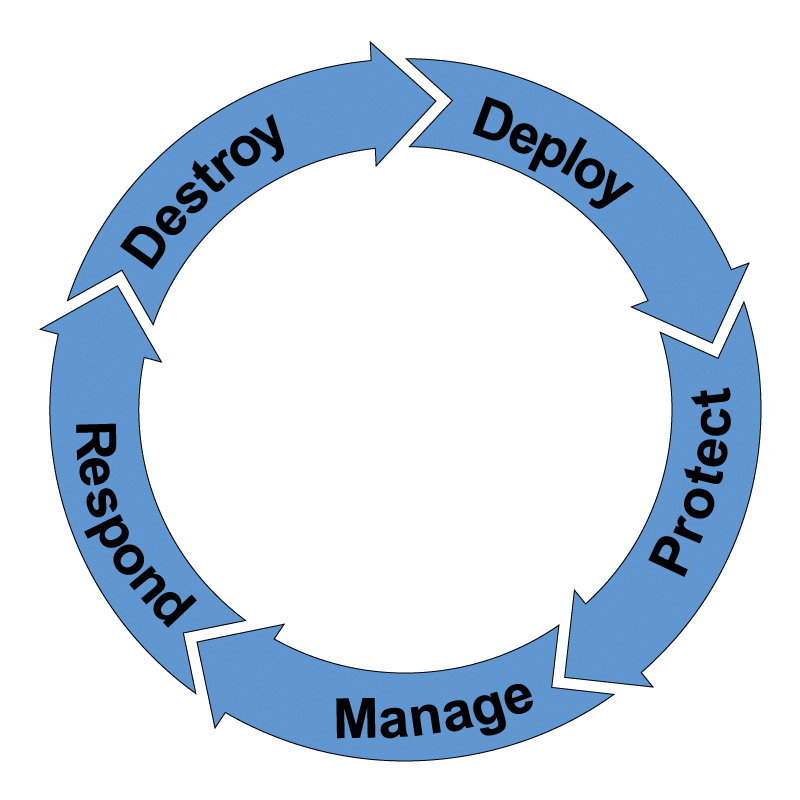Beyond Cybersecurity: The Six Pillars of True Cyber Resilience
 The question isn’t if a cyberattack will happen, it’s when. Today’s threat landscape is relentless, evolving faster than ever before. Cybercriminals are leveraging sophisticated tactics, AI-driven threats, and social engineering schemes designed to bypass even the most advanced security defenses.
The question isn’t if a cyberattack will happen, it’s when. Today’s threat landscape is relentless, evolving faster than ever before. Cybercriminals are leveraging sophisticated tactics, AI-driven threats, and social engineering schemes designed to bypass even the most advanced security defenses.
Traditional cybersecurity focuses on prevention, but prevention alone is no longer enough. What happens when an attacker outsmarts your defenses? How will your business recover, adapt, and continue operating after an incident?
That’s where cyber resilience comes in. It’s not just about stopping attacks, it’s about ensuring your business can withstand, respond to, and recover from them, emerging stronger than before.
The Six Essential Pillars of Cyber Resilience
True resilience isn’t built overnight. It requires a strategic approach that strengthens your organization’s ability to anticipate, mitigate, and recover from cyber incidents. These six core elements form the foundation of a cyber-resilient business:
1. Proactive Cybersecurity: Your First Line of Defense
Cyber resilience starts with strong cybersecurity fundamentals. This includes:
- Regular security risk assessments to uncover vulnerabilities before attackers do
- Threat intelligence monitoring to detect potential risks in real-time
- Multi-layered defense strategies (firewalls, endpoint protection, MFA, zero trust)
A Virtual Chief Security Officer (vCSO) can help businesses develop and maintain a cybersecurity framework tailored to their industry and risk profile. Prevention is key, but proactive security must evolve as threats change.
2. Incident Response: Containing the Damage
Even the most secure businesses experience incidents. The difference is how quickly and effectively you respond. A tested incident response plan (IRP) ensures:
- Rapid containment of a breach to minimize damage
- Clear roles and responsibilities for IT, legal, and executive teams
- Forensic investigation and root cause analysis to prevent future incidents
Having a vCSO leading your response efforts can be the difference between a minor disruption and a catastrophic event.
3. Business Continuity: Keeping Your Business Running
A cyberattack shouldn’t bring your operations to a halt. A Business Continuity and Disaster Recovery (BCDR) strategy ensures:
- Critical systems remain operational even during an incident
- Data backups are secure and quickly recoverable
- Customers experience minimal disruption
Cybercriminals target companies that lack a continuity plan. Don’t be one of them.
4. Adaptability: Staying Ahead of Emerging Threats
Cyber resilience is not static; it’s about continuously adapting to new risks. Businesses that fail to update their defenses are easy targets. Adaptability includes:
- Learning from past incidents and updating security policies
- Regular penetration testing to assess system weaknesses
- Engaging a vCSO to align security strategy with evolving threats
5. Employee Awareness: Closing the Human Security Gap
85% of breaches involve human error. Cybercriminals exploit employees through phishing, social engineering, and insider threats. The solution? Continuous cybersecurity training.
- Simulated phishing exercises to train employees on real-world threats
- Security awareness programs tailored to industry-specific risks
- A culture of accountability, where employees recognize and report threats
A vCSO ensures training programs are relevant, effective, and ongoing—not just a one-time event.
6. Regulatory Compliance: Protecting Your Reputation & Avoiding Fines
Compliance is more than checking boxes; it’s about protecting your business. Whether your industry is governed by HIPAA, PCI DSS, SOX, FFIEC, or GDPR, maintaining compliance:
- Prevents regulatory fines and lawsuits
- Builds trust with clients and stakeholders
- Strengthens overall security posture
A vCSO ensures compliance isn’t just met—but exceeded.
Why Cyber Resilience is a Business Imperative
Cyber resilience is not just an IT issue… it’s a business survival strategy. Every pillar works together to ensure business continuity, customer trust, and regulatory alignment. Without it, businesses risk financial losses, reputational damage, and even closure.
Ready to Take the Next Step?
Reclamere’s CSO360 program provides SMBs with expert Virtual Chief Security Officer (vCSO) leadership, helping you:
✔ Strengthen security defenses with a proactive approach
✔ Develop and test your incident response plan
✔ Align cybersecurity strategy with compliance requirements
✔ Mitigate business risks without the cost of a full-time CISO
Cyber resilience starts now. Don’t wait until a breach forces your hand. Schedule a consultation today to assess your organization’s security posture and start building resilience.








